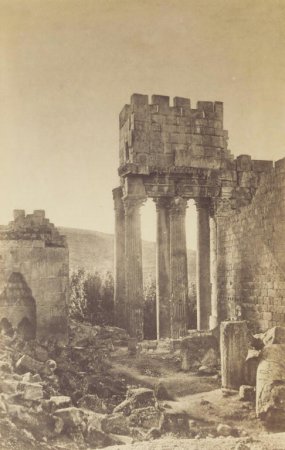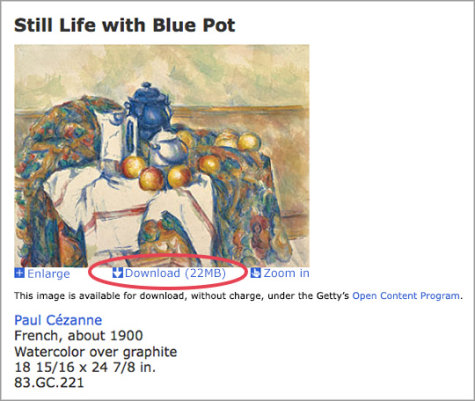Photo Corners headlinesarchivemikepasini.com
![]()
A S C R A P B O O K O F S O L U T I O N S F O R T H E P H O T O G R A P H E R
![]()
Reviews of photography products that enhance the enjoyment of taking pictures. Published frequently but irregularly.
Getty Museum Launches Open Content Program


15 August 2013
In a Getty Museum blog posting this week, Getty President and CEO Jim Cuno announced the museum's Open Content Program, noting it's "an idea whose time has come." As a result, some 592 vintage photographs have become available in high resolution "free to use, modify and publish for any purpose."

Gustave Le Gray. Peristyle, Temple of Bacchus, Baalbek, French, 1860, Albumen silver print.
And that's just the beginning. The museum plans to release more public domain images in its collection after a review of copyright and privacy restrictions on its holdings.
The initial offering includes about 4,600 images in a variety of media including 1,864 manuscripts, 780 drawings, 592 photographs, 442 decorative arts, 413 paintings, 282 scultalpers, 5 jewelry items, among others.
The museum does request a brief description of the intended use when you download the high resolution file. "We hope to learn that the images will serve a broad range of needs and projects," Cuno wrote.
Cuno explained the museum's motivation:
The Getty was founded on the conviction that understanding art makes the world a better place, and sharing our digital resources is the natural extension of that belief. This move is also an educational imperative. Artists, students, teachers, writers, and countless others rely on artwork images to learn, tell stories, exchange ideas, and feed their own creativity. In its discussion of open content, the most recent Horizon Report, Museum Edition stated that "it is now the mark -- and social responsibility -- of world-class institutions to develop and share free cultural and educational resources." I agree wholeheartedly.
A brief scan of the works shows the collection includes works by Julia Margaret Cameron, Walker Evans, Carleton Watkins, Eugene Atget, Nadar, Edward Steichen, Roger Fenton, Thomas Eakins, Berenice Abbott and Paul Strand.
They could be hanging on your walls this afternoon.
Getty Announces New Program Lifting Restrictions on Use of Digital Images
LOS ANGELES -- The Getty has announced that it was lifting restrictions on the use of images to which the Getty holds all the rights or are in the public domain. Getty President and CEO Jim Cuno made the announcement in a post on The Iris, the Getty's blog.
"As of today, the Getty makes available, without charge, all available digital images to which the Getty holds all the rights or that are in the public domain to be used for any purpose," wrote Cuno, citing the new program.

As a result, there are roughly 4,600 images from the J. Paul Getty Museum available in high resolution on the Getty's Web site for use without restriction -- representing 4,689 objects (some images show more than one object), including paintings, drawings, manuscripts, photographs, antiquities and sculpture and decorative arts. The Getty plans to add other images, until eventually all applicable Getty-owned or public domain images are available, without restrictions, online.
The Getty Research Institute is currently determining which images from its special collections can be made available under this program and the Getty Conservation Institute is working to make available images from its projects worldwide.
"The Museum is delighted to make these images available as the first step in a Getty-wide move toward open content," said J. Paul Getty Museum Director Timothy Potts. "The Getty's collections are greatly in demand for publications, research and a variety of personal uses and I am pleased that with this initiative they will be readily available on a global basis to anyone with Internet access."
Previously, the Getty Museum made images available upon request, for a fee and granted specific use permissions with terms and conditions. Now, while the Getty requests information about the intended use, it will not restrict use of available images and no fees apply for any use of images made available for direct download on the Web site.
"The Getty was founded to promote 'the diffusion of artistic and general knowledge' of the visual arts and this new program arises directly from that mission," said Cuno. "In a world where, increasingly, the trend is toward freer access to more and more information and resources, it only makes sense to reduce barriers to the public to fully experience our collections."
"This is part of an ongoing effort to make the work of the Getty freely and universally available," said Cuno.